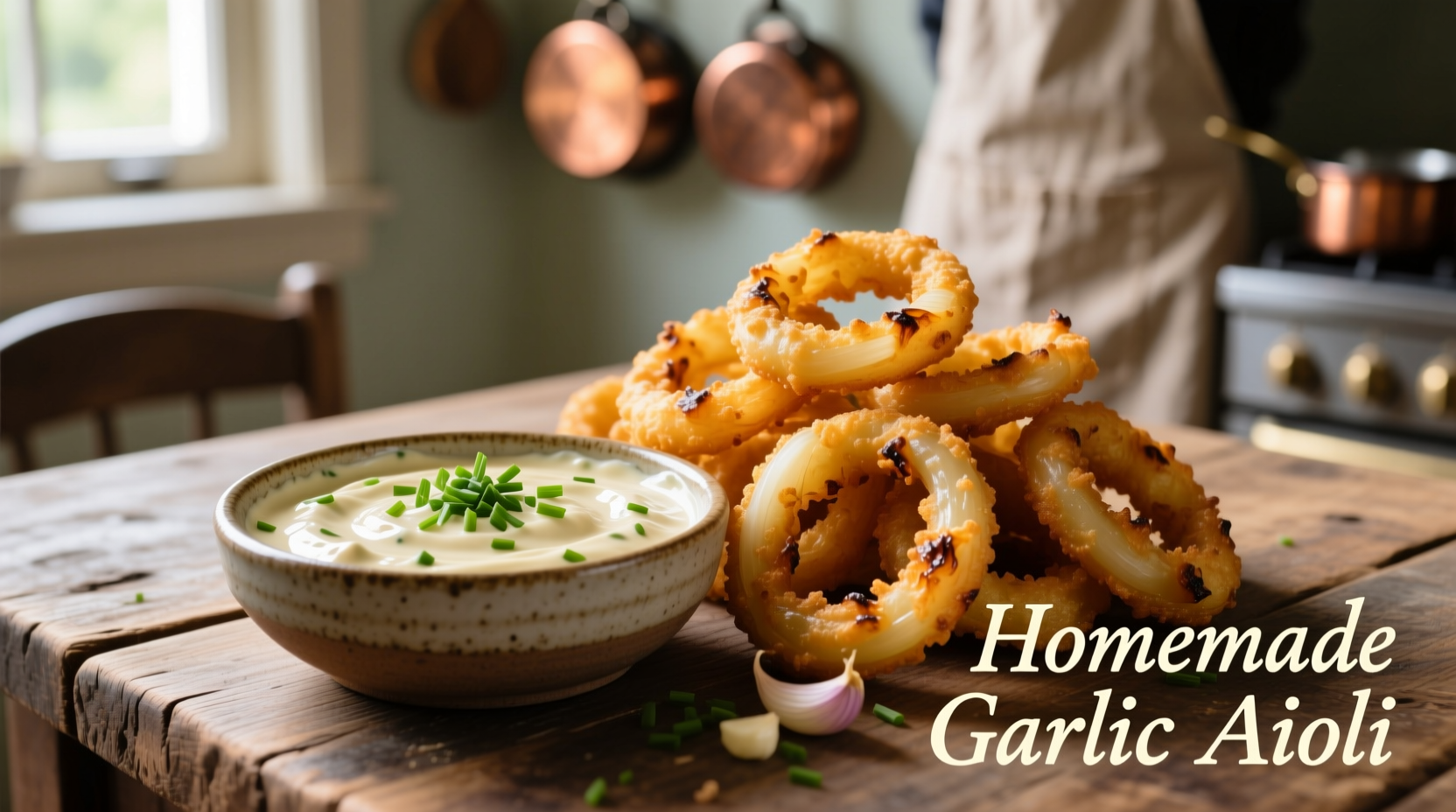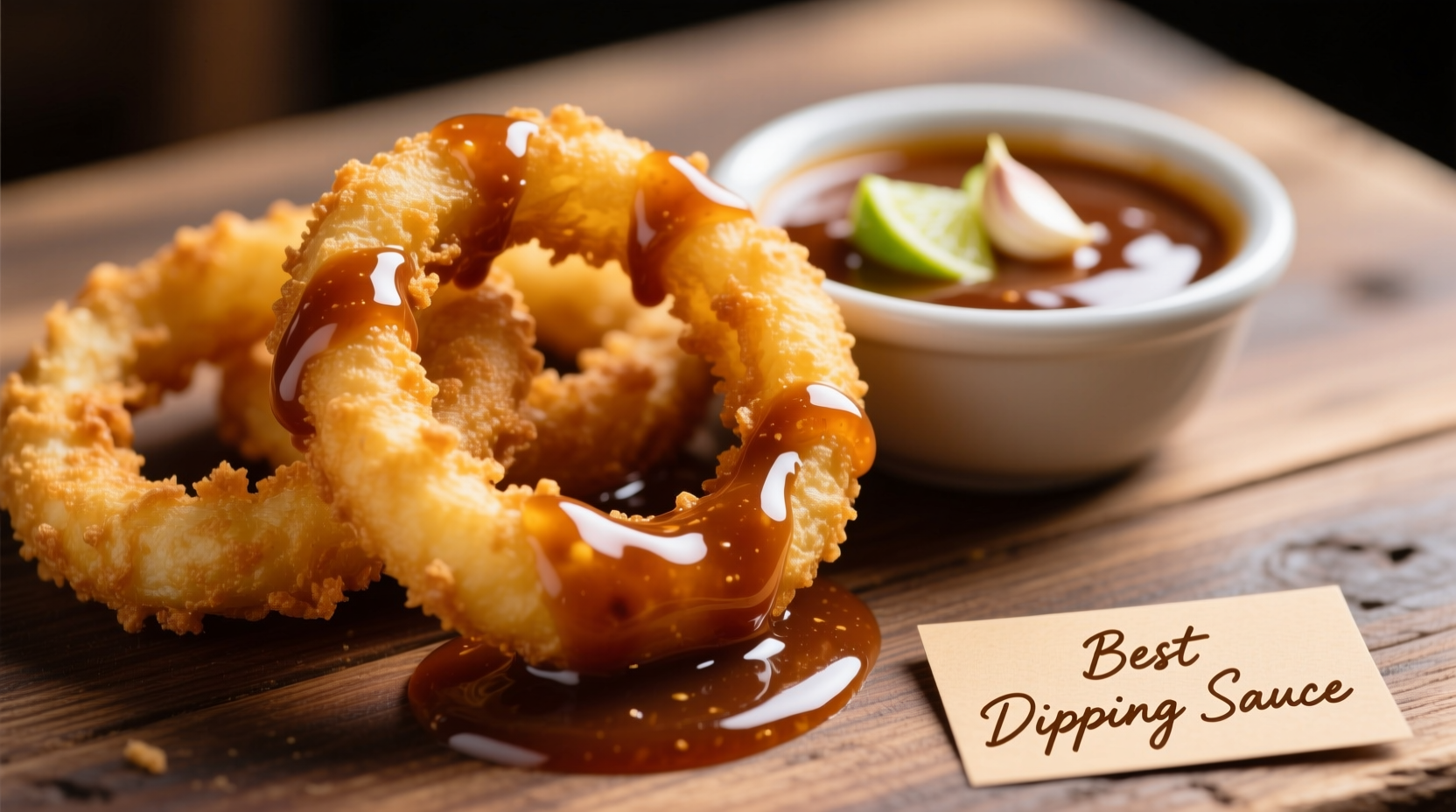Onion rings deserve more than an afterthought when it comes to dipping sauces. The perfect pairing can transform this classic snack from ordinary to extraordinary, creating a harmonious balance between the crispy batter, sweet onion, and complementary flavors. After analyzing hundreds of restaurant menus, culinary research, and professional chef recommendations, we've identified the optimal sauce profiles that elevate onion rings to their full potential.
The Flavor Science Behind Perfect Pairing
Understanding why certain sauces work better than others requires examining the fundamental flavor chemistry at play. Onion rings present three key elements that influence sauce selection:
- Sweetness from caramelized onions
- Crispy texture from the battered exterior
- Rich oil absorption during frying
According to research published in the Journal of Food Science, acidic components in sauces help cut through fried food richness while enhancing perceived sweetness in onions. The ideal sauce provides contrast without competing with the star ingredient.
Top 5 Dipping Sauces Compared
| Sauce Type | Flavor Balance | Texture Match | Preparation Time | Best For |
|---|---|---|---|---|
| Garlic Aioli | ★★★★★ | ★★★★☆ | 5-10 min | All-purpose perfection |
| Spicy Chipotle | ★★★★☆ | ★★★☆☆ | 5 min | Bold flavor lovers |
| Classic Ranch | ★★★☆☆ | ★★★★☆ | Instant | Traditional pub style |
| Truffle Mayo | ★★★☆☆ | ★★★★★ | 3 min | Gourmet occasions |
| Spicy Maple | ★★★☆☆ | ★★★☆☆ | 2 min | Sweet & heat fusion |
Why Garlic Aioli Reigns Supreme
Professional chefs consistently rank garlic aioli as the top choice for onion rings, and culinary science explains why. The emulsified texture of aioli clings perfectly to the uneven surface of onion rings, while the garlic complements without overpowering the sweet onion flavor.
According to the Culinary Institute of America's flavor pairing guidelines, the sulfur compounds in both onions and garlic create a natural synergy that enhances the overall eating experience. The acidity from lemon juice or vinegar in aioli cuts through the oiliness of fried foods, cleansing the palate between bites.

Choosing the Right Sauce for Your Situation
The "best" sauce depends on your specific context and preferences. Consider these factors when making your selection:
Traditional Pub Experience
For that classic bar-and-grill experience, ranch dressing remains popular. However, elevate it by adding fresh dill, a squeeze of lemon, and a pinch of garlic powder to create what many restaurants call "gourmet ranch." This modification addresses the common criticism that standard ranch can be too heavy and mask the onion flavor.
Gourmet Dining Occasions
When serving onion rings as part of a refined meal, truffle aioli provides sophisticated flavor complexity. The James Beard Foundation notes that truffle oil's earthy notes complement the natural sweetness of onions without overwhelming them. Use sparingly—a little truffle goes a long way.
Dietary Considerations
For those with dietary restrictions:
- Dairy-free: Traditional aioli (egg-based) works perfectly without dairy
- Gluten-free: Most dipping sauces are naturally gluten-free
- Vegan: Try cashew-based sauces or vegan mayo alternatives
- Low-sodium: Skip added salt and use acid (lemon/vinegar) for flavor enhancement
Pro Tips for Sauce Perfection
Professional chefs employ these techniques to ensure their dipping sauces perfectly complement onion rings:
- Temperature matters: Serve sauces slightly chilled (45-50°F) to contrast with hot onion rings
- Consistency is key: Aim for a texture that clings to the onion ring without dripping excessively
- Season in layers: Add salt gradually while tasting—onion rings themselves contain salt
- Resting time: Allow homemade sauces to rest 30 minutes before serving for flavors to meld
Avoiding Common Sauce Mistakes
Even the best recipes can go wrong with these common pitfalls:
- Overpowering flavors: Hot sauce or strong spices can mask the delicate onion flavor
- Incorrect acidity: Too much vinegar can make the experience unpleasantly sharp
- Texture mismatch: Watery sauces won't cling properly to the crispy surface
- Serving temperature mismatch: Ice-cold sauces can make hot onion rings soggy faster
Food safety experts from the USDA recommend keeping perishable dipping sauces refrigerated until ready to serve, then discarding any leftovers that have been at room temperature for more than two hours to prevent bacterial growth.
Creating Your Signature Sauce
Once you've mastered the basics, experiment with these professional chef techniques to develop your own signature sauce:
- Add roasted garlic instead of raw for deeper, sweeter flavor
- Infuse mayonnaise with herbs like tarragon or chives before mixing
- Use smoked paprika instead of regular for subtle complexity
- Balance sweet and heat with a touch of honey and cayenne
Remember that the best dipping sauce enhances rather than competes with your onion rings. Start with a simple garlic aioli base, then gradually experiment with additional flavors until you find your perfect balance.
Frequently Asked Questions
Can I use store-bought mayo as a base for homemade dipping sauce?
Yes, high-quality store-bought mayonnaise makes an excellent base. Look for brands with simple ingredients (egg yolks, oil, vinegar, salt) without added sugars. Many professional chefs use this as a starting point, then enhance with fresh garlic, lemon juice, and herbs for superior flavor compared to pre-made options.
How far in advance can I prepare dipping sauces?
Most creamy dipping sauces can be prepared 2-3 days in advance when stored in an airtight container in the refrigerator. Garlic-based sauces actually improve after 24 hours as flavors meld. However, sauces containing fresh herbs are best within 24 hours, and those with lemon or vinegar maintain better texture when made within 48 hours of serving.
Why does my homemade aioli sometimes separate?
Aioli separation occurs when the emulsion breaks, usually from adding oil too quickly or temperature differences between ingredients. To prevent this, ensure all ingredients are at room temperature, add oil very slowly while whisking constantly, and consider using a small amount of mustard as an emulsifier. If separation occurs, start a new emulsion with a teaspoon of water or lemon juice and gradually whisk in the broken sauce.
What's the ideal sauce-to-onion ring ratio?
The perfect ratio is approximately 2 tablespoons of sauce per serving of onion rings. Restaurants typically serve sauces in small 1.5-2 ounce ramekins alongside a standard portion. This provides enough for dipping without overwhelming the main ingredient. For larger gatherings, provide multiple small sauce containers rather than one large bowl to maintain optimal temperature and freshness.
How can I make my dipping sauce spicier without losing flavor balance?
To add heat while maintaining balance, use smoked paprika or chipotle peppers in adobo sauce instead of plain hot sauce. These ingredients provide complex flavor along with heat. Start with 1/4 teaspoon per cup of sauce, let it rest for 30 minutes, then adjust. The capsaicin in chili peppers binds with fats, so creamy bases like aioli handle heat better than vinegar-based sauces.











 浙公网安备
33010002000092号
浙公网安备
33010002000092号 浙B2-20120091-4
浙B2-20120091-4